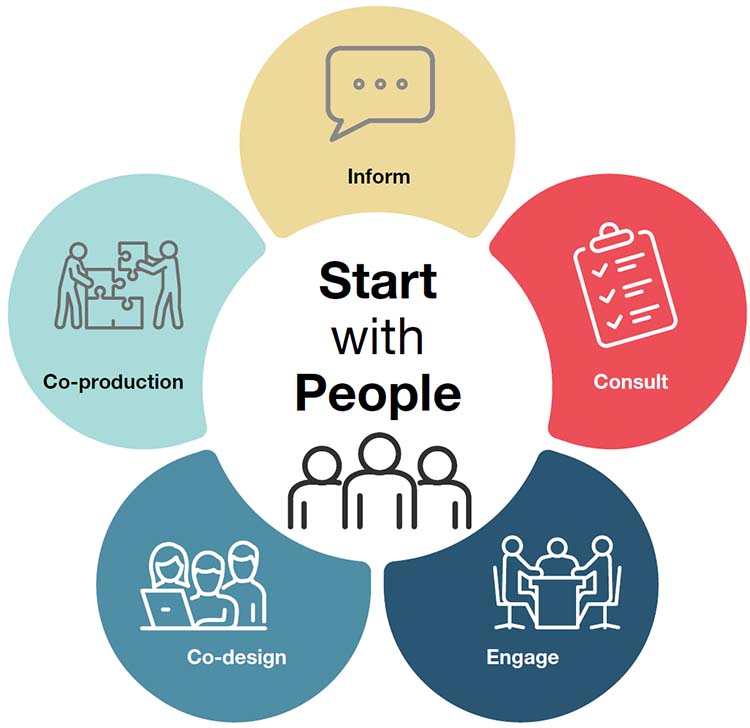“The biggest challenge for us is to know when co-production should and shouldn’t be used.”
Staff and resident workshops 2023
“The biggest challenge for us is to know when co-production should and shouldn’t be used.”
Staff and resident workshops 2023
During our workshops with local people, we identified qualities that make it possible for people to co-produce. This included:
We know that creating genuine co-production across Bracknell Forest Council will take time to do well. There is never a perfect time to begin. The most important thing is that we get started.
Achieving co-production is an iterative process and there are steps along the way before we achieve genuine co-production.
Each step on the pathway creates an opportunity for learning and further development.
We won’t see every service moving at the same pace. For example, we may achieve full co-production within one project or stream of work but not in others.
In some situations it will be necessary to use other methods, such as consultation and engagement. All these methods are valid and it is important that we make sure we do these well.
We need to be consistent in our assessments of what methods we are using and why. If we are consulting, we call it consulting, when we are co-producing we name it too. And in each case we can be clear why we have selected this as the best method for what we are trying to achieve.
The following sections are designed to help us frame the work we are doing and understand the difference between co-production and other forms of engagement.
This image has been developed by the NHS to illustrate the different ways in which services can work with people. In Bracknell Forest, there is a lot of interest in how co-production is different from other types of engagement. The next page provides some practical examples.
Ultimately, it is important that our collective direction of travel is towards a future where more people are having a great experience of being actively involved in designing, delivering and evaluating the support they receive with Bracknell Forest Council.
People are at the heart of the flower. Not all situations lend themselves to co-production but we will always try to co-produce. It’s important to match the right methods to the aims you are hoping to achieve. Over time we will continue to assess projects on a case by case basis but will always try and use co-production where possible.

This diagram shows some of the different ways of working with people and communities:
We work with people who use services to design the support they want and need based on their experiences and ideas. They have genuine influence in shaping services that we then deliver for them.
We work with people who use services by asking open questions to understand their views and experiences. They may be able to influence some decisions, but this depends on what is appropriate within the timeframes and budget we have available.
We invite people who use services to fill in surveys or attend meetings to discuss a challenge we are facing. We decide the focus of people’s input based on what we need to know. Sometimes people may experience their involvement as tokenistic and say they do not have the full story or the power to affect change.
We produce leaflets, online information and run sessions to tell people about the services available, the eligibility criteria and how they work. We produce newsletters that update people when changes have been made.
We should only consider co-producing if we are truly committed to working in this way. We are unlikely to have everything perfectly in place before we begin, but we need to acknowledge that coproduction takes time and resource, especially at the start.
These are the questions we ask before we decide to start co-producing:
There are some occasions when co-production won’t be possible. To build a local culture of positive co-production, we must be confident to say when (and why) we can’t co-produce. This will build trust in the process and create more positive relationships with local people. For example when: